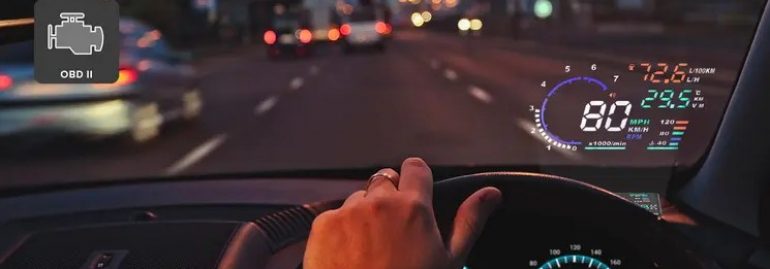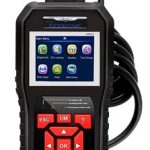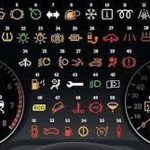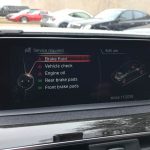Computer Diagnostic Auto: A Comprehensive Guide
Imagine this: you’re driving down the road, and suddenly, the dreaded check engine light illuminates your dashboard. Your heart sinks as you wonder what could be wrong with your car. In today’s world of sophisticated vehicles, a simple warning light can indicate a myriad of issues. Thankfully, there’s a solution that takes the guesswork out of car repair: computer diagnostic auto. This comprehensive guide will delve into the world of computer diagnostic auto, exploring its importance, benefits, and how it works. We’ll also discuss different types of diagnostic tools and software, common problems diagnosed, and troubleshooting tips to empower you with the knowledge to keep your vehicle running smoothly.
What is Computer Diagnostic Auto?
Computer diagnostic auto, also known as On-Board Diagnostics (OBD), is a system that allows technicians to communicate with a vehicle’s internal computer system. This system acts as a central hub for monitoring and controlling various aspects of the vehicle’s performance, from engine operation to emissions control. At the heart of this system lies the OBD port, typically located under the dashboard, which serves as the access point for diagnostic tools. By connecting a specialized scanner to this port, technicians can retrieve valuable information about the vehicle’s health and performance.
Modern vehicles are equipped with an array of sensors that continuously monitor different parameters, such as engine temperature, oxygen levels, and transmission fluid pressure. These sensors act as the eyes and ears of the vehicle’s computer system, providing real-time data on various components and systems. When a sensor detects an anomaly or malfunction, it triggers a diagnostic trouble code (DTC), which is stored in the vehicle’s computer memory. These codes serve as indicators of potential problems, guiding technicians towards the source of the issue.
Why is Computer Diagnostic Auto Important?
Computer diagnostic auto has revolutionized the way we approach vehicle maintenance and repair. It offers several advantages over traditional troubleshooting methods, making it an essential tool for car owners and technicians alike.
- Accuracy and Efficiency: Computer diagnostics provide precise information, allowing mechanics to pinpoint issues quickly and accurately. This eliminates the guesswork and trial-and-error often associated with traditional methods, leading to faster repairs and reduced labor costs.
- Comprehensive Analysis: Unlike manual inspections, which may overlook hidden or interconnected issues, computer diagnostics offer a comprehensive analysis of various vehicle systems simultaneously. This holistic approach ensures that potential problems are identified and addressed before they escalate into major repairs.
- Early Problem Detection: One of the most significant benefits of computer diagnostics is the ability to detect problems early on. By identifying minor issues before they become major headaches, it allows for timely intervention and preventive maintenance, saving you from costly repairs down the road.
- Improved Vehicle Performance: By identifying and rectifying even minor glitches, computer diagnostics help fine-tune your vehicle’s performance. This ensures optimal engine operation, smoother transmission shifts, and improved fuel efficiency, contributing to a more enjoyable driving experience.
- Cost-Effective Maintenance: Early problem detection through computer diagnostics can save you significant money in the long run. By addressing issues proactively, you can avoid more serious and expensive repairs that may arise from neglecting minor problems.
- Increased Resale Value: Regular diagnostics contribute to a well-maintained vehicle, which can fetch a higher resale value. A history of proactive maintenance and care makes your car more attractive to potential buyers, giving you an edge in the pre-owned market.
- Enhanced Fuel Efficiency: An efficiently running engine consumes less fuel. Computer diagnostics help optimize engine performance and identify issues that may be affecting fuel economy, such as faulty sensors or a clogged air filter.
- Reduced Emissions: By ensuring optimal engine combustion and identifying emission-related problems, computer diagnostics contribute to a cleaner environment. This helps your vehicle comply with emission standards and reduces its carbon footprint.
- Enhanced Customer Communication: When technicians use computer diagnostics, they can provide detailed reports and explanations of the identified issues to their customers. This transparency fosters trust and allows car owners to make informed decisions about repairs.
How Does Computer Diagnostic Auto Work?
The process of computer diagnostic auto involves a series of steps that allow technicians to access and interpret information from the vehicle’s computer system.
- Locating the OBD Port: The first step is to locate the OBD port, which is typically found under the dashboard on the driver’s side. This standardized 16-pin connector serves as the access point for diagnostic tools.
- Connecting the Diagnostic Tool: Once the OBD port is located, a diagnostic scan tool is connected. These tools range from basic code readers to advanced professional-grade scanners, each with varying capabilities.
- Establishing Communication with the ECU: After the scan tool is connected, it establishes communication with the vehicle’s Electronic Control Unit (ECU), often referred to as the car’s “brain.” The ECU continuously monitors various systems and stores diagnostic trouble codes (DTCs) when problems are detected.
- Retrieving Diagnostic Trouble Codes: The scan tool retrieves the stored DTCs from the ECU. These codes provide clues about the nature and location of potential issues.
- Interpreting the Codes: Technicians then interpret the codes, using their knowledge and experience to understand the underlying causes of the problems. This step often involves consulting service manuals or online databases to get detailed information about the specific codes.
- Conducting Further Diagnostics: In some cases, further diagnostics may be necessary to pinpoint the exact issue. This might involve physical inspections, testing components with specialized tools, or analyzing live data from the vehicle’s sensors.
- Formulating a Repair Strategy: Once the problem is accurately diagnosed, technicians can formulate a repair strategy. This may involve replacing faulty parts, repairing damaged components, or adjusting system settings.
The Role of Key Sensors in the Diagnostic Process
Sensors play a vital role in computer diagnostic auto by providing the ECU with real-time data on various vehicle parameters. Some of the key sensors involved in the diagnostic process include:
- Mass Airflow Sensor: Measures the volume of air entering the engine to optimize fuel injection.
- Throttle Position Sensor: Monitors the throttle valve’s position for precise engine airflow regulation.
- Manifold Absolute Pressure Sensor: Measures the air pressure in the intake manifold to adjust fuel delivery and ignition timing.
- Coolant Temperature Sensor: Monitors engine temperature and ensures efficient cooling system operation.
- Exhaust Oxygen Sensor: Measures oxygen levels in exhaust gases for efficient fuel combustion and emission control.
- Crankshaft Position Sensor: Tracks the crankshaft’s position and speed for accurate ignition timing.
- Camshaft Position Sensor: Monitors camshaft position and speed for synchronization of fuel injection and valve timing.
These sensors, along with many others, provide a comprehensive picture of the vehicle’s operating conditions, allowing the ECU to detect anomalies and trigger diagnostic trouble codes when necessary.
The Role of OBD-II in Computer Diagnostic Auto
OBD-II (On-Board Diagnostics II) is a standardized system that has revolutionized vehicle diagnostics. It provides a universal interface for accessing diagnostic information from a vehicle’s computer system, making it easier for technicians to troubleshoot problems across different makes and models.
OBD-II systems monitor various emission-related components and systems, ensuring that vehicles comply with environmental regulations. They also provide access to a wide range of data, including:
- Diagnostic Trouble Codes (DTCs): These codes indicate specific problems within the vehicle’s systems.
- Freeze Frame Data: This captures sensor readings at the moment a DTC is triggered, providing valuable context for diagnosis.
- Live Data: This allows technicians to monitor real-time sensor readings and system performance.
- Vehicle Information: This includes the Vehicle Identification Number (VIN), Calibration Identification Number, and other relevant data.
OBD-II has significantly improved the accuracy and efficiency of vehicle diagnostics, making it an essential tool for modern car maintenance.
Diagnostic Trouble Codes (DTCs)
Diagnostic Trouble Codes (DTCs) are the language of computer diagnostic auto. These standardized codes provide valuable insights into the nature and location of potential problems within a vehicle’s systems.
DTCs are categorized based on the system they relate to:
- P-codes (Powertrain): These codes relate to the engine and transmission, including issues with emissions, fuel injection, ignition, and sensors. For example, P0171 indicates a lean air-fuel mixture.
- B-codes (Body): These codes address issues with components inside the vehicle, such as airbags, power seats, and climate control. For example, B0028 indicates a problem with the driver’s frontal airbag deployment loop resistance.
- C-codes (Chassis): These codes focus on systems related to the vehicle’s chassis, such as anti-lock braking systems (ABS), steering, and suspension. For example, C0035 indicates a malfunction in the left front wheel speed sensor.
- U-codes (Network & Communication): These codes relate to communication issues between different computers or control modules in the vehicle. For example, U0100 indicates lost communication with the Engine Control Module (ECM).
Each DTC consists of five characters, providing specific information about the fault:
- First character (letter): Indicates the system (e.g., P, B, C, U).
- Second character (digit): Indicates whether the code is generic (0) or manufacturer-specific (1).
- Third character (digit): Indicates the subsystem (e.g., fuel, emissions, ignition).
- Fourth and fifth characters (digits): Provide a specific fault index.
Here are some examples of common DTCs and their meanings:
- P0300: Random/Multiple Cylinder Misfire Detected. This indicates that the engine is misfiring across several cylinders, which could be caused by various issues such as faulty spark plugs, ignition coils, or fuel injectors.
- P0420: Catalyst System Efficiency Below Threshold (Bank 1). This code signals that the catalytic converter is not efficiently reducing harmful emissions, often indicating a problem with the converter itself or related components like oxygen sensors.
- P0171: System Too Lean (Bank 1). This indicates that the engine is receiving too much air or too little fuel, resulting in a lean air-fuel mixture. Possible causes include vacuum leaks, faulty mass airflow sensors, or clogged fuel injectors.
Types of OBD-II Scanners
OBD-II scanners come in various forms, each with different features and capabilities. Choosing the right scanner depends on your needs and level of expertise.
|
Type |
Description |
Features |
|---|---|---|
|
Engine Code Readers |
Basic scanners that retrieve and display engine-related DTCs. |
Read and clear engine codes, display freeze frame data, and sometimes show live data. |
|
Bluetooth/WiFi Scanners |
Wireless scanners that connect to smartphones or tablets via Bluetooth or WiFi. |
Read and clear codes from various modules, display live data, perform active tests, and access advanced features through mobile apps. |
|
OBD2 Gauges & Monitors |
Display real-time data from various sensors in a gauge format. |
Monitor engine parameters, such as temperature, pressure, and speed, in real-time. |
|
Multi-System Scan Tools |
Diagnose multiple systems beyond the engine, such as ABS, SRS, and transmission. |
Read and clear codes from various modules, display live data, perform active tests, and offer service reset functions. |
|
Single-Make Scan Tools |
Specialized scanners designed for specific car brands. |
Offer comprehensive diagnostics and advanced functions for a particular car make. |
|
Professional Scan Tools |
Advanced scanners with extensive capabilities for professional use. |
Read and clear codes from all modules, display live data, perform bi-directional controls, offer ECU programming, and provide access to technical information and repair databases. |
|
ALLDATA Diagnostics |
Professional-level scan tool with integrated OEM repair procedures. |
Bi-directional component control, reads and displays PIDs, exportable pre- and post-DTC scan, FCA Vehicle Network Support, and integration with ALLDATA Repair or Collision. |
Popular Diagnostic Tools
Several OBD-II scanners stand out for their features and user-friendliness. Here are a few popular options:
- Topdon TopScan: This Bluetooth OBD automotive scanner offers a wealth of features, including full system diagnostics, the ability to read and clear codes, access ECU information, and perform various vehicle reset functions. It also has bi-directional capabilities for active testing and supports over 70 vehicle makes.
- Ancel BD310: This scanner offers both corded and Bluetooth connectivity, providing flexibility in how you access diagnostic information. It has an excellent user interface and provides comprehensive code reading and clearing capabilities.
- BlueDriver Bluetooth Pro: This Bluetooth scanner boasts an intuitive mobile app that provides detailed code definitions, repair reports, and live data graphing. It also offers continuous updates to ensure you have the latest information.
- Innova 6100P: This hybrid scanner offers both handheld and app-based diagnostics. It features a color display, live data streaming, and the ability to reset battery and oil lights. It also includes a feature that predicts when various car components might fail.
- Innova 5610: This diagnostic scanner offers a wide range of capabilities, including bidirectional control, testing functions, and additional diagnostic suggestions. It’s a more advanced option suitable for professional use.
Advanced Driver-Assistance Systems (ADAS)
Advanced Driver-Assistance Systems (ADAS) are becoming increasingly common in modern vehicles. These systems rely on a network of sensors and cameras to provide features such as lane keeping assist, blind spot detection, adaptive cruise control, and automatic emergency braking.
Computer diagnostics play a crucial role in calibrating and troubleshooting ADAS. Diagnostic tools can access the ADAS modules, read sensor data, and perform calibrations to ensure these systems function correctly. This is essential for maintaining the safety and performance of ADAS features.
Common Engine Problems Diagnosed
Computer diagnostics are highly effective in identifying various engine problems. Some common engine issues that can be diagnosed through this method include:
- Engine Misfires: This occurs when one or more cylinders fail to fire properly, leading to reduced power, rough idling, and increased emissions. Diagnostic tools can pinpoint the misfiring cylinder and help determine the underlying cause, such as faulty spark plugs, ignition coils, or fuel injectors.
- Oxygen Sensor Issues: Oxygen sensors play a crucial role in maintaining the correct air-fuel mixture for optimal combustion. Faulty oxygen sensors can lead to decreased fuel efficiency, increased emissions, and even engine damage. Diagnostic tools can identify malfunctioning oxygen sensors and help determine if they need replacement.
- Faulty Air Flow Sensors: Air flow sensors measure the amount of air entering the engine, which is essential for calculating the correct fuel injection. A faulty air flow sensor can cause various problems, including poor acceleration, rough idling, and increased fuel consumption. Diagnostic tools can identify these issues and help determine if the sensor needs replacement or cleaning.
- Electronic Throttle Control Problems: Electronic throttle control (ETC) systems electronically regulate airflow into the engine. Problems with the ETC can lead to decreased fuel efficiency, jerky acceleration, engine stalling, and transmission shifting issues. Diagnostic tools can identify ETC malfunctions and help determine the necessary repairs.
- Catalytic Converter Problems: Catalytic converters reduce harmful emissions from the exhaust system. A malfunctioning catalytic converter can lead to increased emissions, reduced engine performance, and even engine damage. Diagnostic tools can identify catalytic converter issues and help determine if it needs replacement.
Common Transmission Problems Diagnosed
Computer diagnostics are also valuable for identifying transmission problems. Some common transmission issues that can be diagnosed include:
- Slipping Gears: This occurs when the transmission fails to maintain the correct gear ratio, causing the engine to rev without transferring power to the wheels. Diagnostic tools can identify slipping gears and help determine the underlying cause, such as low transmission fluid, worn clutches, or faulty solenoids.
- Delayed Shifting: If your car hesitates or takes a long time to shift gears, it could indicate a problem with the transmission. Diagnostic tools can identify the cause of delayed shifting, such as low fluid levels, a faulty valve body, or a problem with the transmission control module.
- Unusual Noises: Grinding, whining, or clunking sounds during gear changes can indicate mechanical issues within the transmission. Diagnostic tools can help pinpoint the source of these noises and determine the necessary repairs.
- Transmission Fluid Leaks: Transmission fluid is essential for lubricating and cooling the transmission. Leaks can lead to various problems, including slipping gears and transmission damage. Diagnostic tools can help identify leaks and determine the source, such as a damaged seal or gasket.
Common Brake Problems Diagnosed
Computer diagnostics can also be used to diagnose brake problems, especially those related to the anti-lock braking system (ABS). Some common brake issues that can be identified include:
- Worn Brake Pads: Worn brake pads can cause squeaking or grinding noises, reduced braking performance, and increased stopping distances. Diagnostic tools can sometimes identify worn brake pads by monitoring brake pad wear sensors.
- Sticking Brake Caliper: A sticking brake caliper can cause the vehicle to pull to one side, reduce braking efficiency, and even lead to uneven brake pad wear. Diagnostic tools can sometimes identify sticking calipers by monitoring wheel speed sensors and brake pressure.
- Damaged or Worn Brake Rotors: Brake rotors can become warped or worn over time, causing pulsations in the brake pedal and reduced braking performance. Diagnostic tools can sometimes identify rotor problems by monitoring wheel speed sensors and brake pressure.
- Brake Fluid Problems: Low brake fluid levels, leaks in the brake lines, or contaminated brake fluid can compromise braking performance and even lead to brake failure. Diagnostic tools can sometimes identify brake fluid problems by monitoring brake pressure sensors and fluid level sensors.
- ABS Performance Problems: The ABS prevents the wheels from locking up during hard braking, improving vehicle stability and control. Diagnostic tools can identify problems with the ABS, such as faulty sensors or a malfunctioning ABS module.
Common Electrical Problems Diagnosed
Computer diagnostics are essential for diagnosing electrical problems in modern vehicles, which rely heavily on complex electrical systems. Some common electrical issues that can be identified include:
- Dead Battery: A dead battery can prevent the vehicle from starting or cause various electrical components to malfunction. Diagnostic tools can check battery voltage and identify charging system problems.
- Malfunctioning Alternator: The alternator charges the battery and powers the electrical system while the engine is running. A faulty alternator can lead to a dead battery, dimming lights, and electrical component failures. Diagnostic tools can identify alternator problems by monitoring charging system voltage and current.
- Faulty Starter Motor: The starter motor initiates the engine’s starting process. A faulty starter can prevent the engine from cranking or cause a clicking sound when the key is turned. Diagnostic tools can sometimes identify starter problems by monitoring starter motor current and voltage.
- Sensor Failures: Various sensors throughout the vehicle rely on electrical signals to function. Diagnostic tools can identify faulty sensors, such as oxygen sensors, mass airflow sensors, and throttle position sensors, by monitoring their output signals and comparing them to expected values.
- Wiring Issues: Damaged wiring, loose connections, or short circuits can cause various electrical problems. Diagnostic tools can sometimes identify wiring issues by monitoring voltage drops and resistance in different circuits.
How to View Live Data with OBD-II Scanner
OBD-II scanners offer the capability to view live data from various sensors and systems in real-time. This feature provides valuable insights into the vehicle’s operating conditions and can be used for both diagnosis and performance monitoring.
To view live data with an OBD-II scanner:
- Connect the Scanner: Plug the scanner into the vehicle’s OBD-II port.
- Turn on the Ignition: Turn the ignition key to the “on” position without starting the engine.
- Select Live Data: Navigate to the “Live Data” option in the scanner’s menu.
- Choose Parameters: Select the specific parameters you want to monitor, such as engine speed, coolant temperature, or oxygen sensor readings.
- Monitor the Data: Observe the live data stream and look for any unusual readings or patterns that may indicate a problem.
Key Vehicle Systems and Parameters to Monitor:
- Engine: Engine speed (RPM), engine load, coolant temperature, intake manifold pressure, mass airflow, fuel trim, and oxygen sensor readings.
- Transmission: Transmission fluid temperature, gear position, and shift solenoid status.
- Brakes: Brake fluid pressure, wheel speed sensor readings, and ABS module status.
- Emissions: Oxygen sensor readings, catalytic converter efficiency, and evaporative emissions system status.
By monitoring live data, you can gain a deeper understanding of your vehicle’s performance and identify potential issues before they become major problems.
Bi-directional Control in Computer Diagnostic Auto
Bi-directional control is an advanced feature found in some OBD-II scanners that allows technicians to not only read data from the vehicle’s computer system but also send commands to various components and systems. This capability enables active testing of components, such as turning on the fuel pump, activating solenoids, or controlling actuators.
Bi-directional control offers several benefits:
- Precise Diagnostics: By actively testing components, technicians can pinpoint issues more accurately and efficiently.
- Reduced Diagnostic Time: Bi-directional control can eliminate the need for time-consuming manual tests.
- Enhanced Safety: It allows for safer testing of components that may be dangerous to activate manually.
For example, if a diagnostic trouble code indicates a problem with the evaporative emissions system, a technician can use bi-directional control to command the purge valve to open and observe the fuel trim values. This helps determine if the purge valve is functioning correctly or if it needs replacement.
Advanced Diagnostic Functions
Advanced diagnostic tools offer a range of functions beyond basic code reading and clearing. These functions provide deeper insights into the vehicle’s systems and enable more comprehensive troubleshooting.
- Data Logging: This allows technicians to record sensor data over time, which can be helpful for identifying intermittent problems or analyzing performance trends.
- Real-Time Monitoring: This provides a dynamic view of the vehicle’s operating conditions, allowing technicians to observe sensor readings and system performance in real-time.
- ECU Programming: This allows technicians to update the vehicle’s software, reprogram modules, and adjust system parameters. This is essential for addressing software-related issues, optimizing performance, and adapting the vehicle to new components or modifications.
These advanced functions empower technicians with the tools and information they need to diagnose and repair complex vehicle problems efficiently.
The Future of Computer Diagnostic Auto
The future of computer diagnostic auto is poised for exciting advancements, driven by innovations in artificial intelligence (AI) and connectivity.
- AI-Powered Diagnostics: AI is transforming car repairs by enabling faster and more accurate diagnostics. AI tools can analyze noise and vibration data, identify patterns in sensor readings, and even predict potential failures before they occur.
- Remote Diagnostics: Connected car technology allows for remote diagnostics, where technicians can access vehicle data and perform partial diagnostics without being physically present. This can save time and improve efficiency for both car owners and repair shops.
- Predictive Maintenance: AI-powered predictive maintenance systems analyze vehicle data to predict when certain parts are likely to fail. This allows for proactive maintenance, reducing the risk of breakdowns and extending the lifespan of components.
- Augmented Reality (AR) and Virtual Reality (VR): AR and VR technologies are being integrated into diagnostic tools, providing technicians with interactive visual guides and step-by-step instructions for complex repairs.
These advancements promise to make computer diagnostic auto even more powerful and user-friendly, further enhancing the efficiency and accuracy of vehicle maintenance and repair.
Conclusion
Computer diagnostic auto has become an indispensable tool in modern vehicle maintenance. It offers a range of benefits, from early problem detection and improved performance to cost-effective repairs and enhanced safety. By understanding the principles of computer diagnostic auto, the different types of diagnostic tools and software, and the common problems that can be diagnosed, car owners and technicians can ensure optimal vehicle health and longevity. As technology continues to evolve, computer diagnostic auto will play an even greater role in keeping our vehicles running smoothly and safely.
For more information on computer diagnostic auto, visit Total Car Diagnostics.
Consider investing in a quality computer diagnostic auto tool for accurate and efficient vehicle maintenance.






